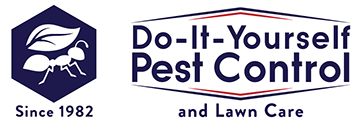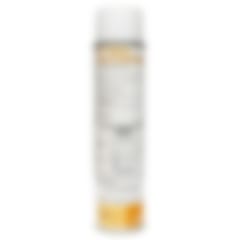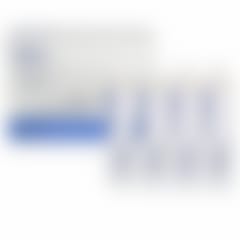
Alpine Aerosol PT
Starting at $29.20
BUNDLE & SAVE 5%!

Alpine is really good for bed bugs, ants, and roaches. It is a pretty new formula that provides safe use but effective insect results. If you want to mix and match your aerosols, we can give you a case price on any 12 cans, but you would have to call us on that one.
Product Information
Alpine Aerosol PT At a Glance Features
- Broad spectrum label against ants, cockroaches, bed bugs, spiders, and occasional invaders.
- Convenient, ready-to-use formulation.
- Long-lasting non-repellent control of ants.
- A perfect rotational partner in a nonrepellent program.
- All Alpine formulations contain the active ingredient dinotefuran, a new nonrepellent to the pest control industry that the EPA has granted reduced-risk status for public health use.
Alpine's Advantages
- Dinotefuran(active ingredient in Alpine) is a relatively new insecticide belonging to the class of insecticides known as neonicotinoids, which are among the most widely used insecticides in the world. Dinotefuran products are labeled "Reduced-Risk" by the EPA, meaning they have very low toxicity and are generally safer around humans, pets, and the environment.
- Alpine has a broad-use label for inside and outside non-food handling areas. It is a convenient, ready-to-use formation labeled for use against ants, cockroaches, bed bugs, spiders, and occasional invaders. Alpine is a long-lasting nonrepellent for the control of ants. It is a perfect rotational partner in a nonrepellent program.
* All Alpine formulations contain the active ingredient dinotefuran, a new nonrepellent to the pest control industry that the EPA has granted reduced-risk status for public health use.
| Packaging | 14 oz and 20 oz |
|---|---|
| Product Label | Product Label |
| SDS | SDS |
| More PDF's | N/A |
| Target Pest | ants (including foraging carpenter, fire, harvester, and pharaoh), Asian lady beetles, bed bugs, booklice, boxelder bugs, clover mites, cluster flies, crickets, dermestids, drugstore beetles, earwigs, elm leaf beetles, flour beetles (red and confused), fruit flies, German cockroaches, grain weevils, Indian meal moths, millipedes, phorid flies, pillbugs, powder post beetles, silverfish, sowbugs, spiders (excluding black widow), springtails, and Trogoderma |
| Active Ingredient (s) | Dinotefuran .5% |
| For Use : | Apartments, Campgrounds, Homes, Hospitals, Hotels, Motels, Non Food Areas (Meat Packing and Food Processing Plants, Restaurants, Supermarkets), Nursing Homes, Resorts, Schools, Transportation Equipment (Buses, Boats, Ships, Trains, Trucks, Planes†), Utilities, Warehouses, and other Commercial and Industrial Buildings |
| Yield | 14 oz and 20 oz |
| Mixture|Application | Apply as a crack and crevice or spot treatment |
| Retreatment | As needed, bed bug treatment use more frequently |
| Shipping Restrictions | AK, HI Can not be shipped by expedited choices, per air regulations. |
| More Instructions | Application Directions:CRAWLING INSECTS: Apply as a crack and crevice or spot treatment where insects are harboring, traveling, or breeding. Reapply as necessary. For example, openings around pipes and sinks, under refrigerators, pantries, behind baseboards, washing machines, stoves, cabinets, sewers, floor drains, and meter boxes. In commercial areas, apply as a crack and crevice or spot treatment in office areas, stainless steel equipment, shelving, machinery, storage areas, pallets, and other areas where insects may be harboring, traveling, breeding, or entering the structure. BED BUGS: Apply as a crack and crevice, or spot treatment where evidence of bed bugs occurs. This includes bed frames, box springs, inside empty dressers, clothes closets, carpet edges, high and low wall moldings, and wallpaper edges. Do not use this product on mattresses, pillows, bed linens, or clothes. Remove all clothes and other articles from dressers or clothes closets before application. Allow all treated areas to dry thoroughly before use. Reapply as necessary. Alpine is not recommended for use as sole protection against bed bugs. If evidence of bed bugs is found in/on mattresses, use products approved for this use. NON-FOOD AREAS: include areas such as garbage rooms, lavatories, floor drains (to sewers), entries and vestibules, offices, locker rooms, machine rooms, boiler rooms, garages, mop closets, storage areas (after canning or bottling), and serving areas (when no food is present). Apply as a crack and crevice treatment or spot treatment to selective surfaces such as baseboards, under elements of construction, stainless steel equipment, shelving, machinery, storage areas, pallets, tables, chairs, and other areas where these insects may be harboring, traveling, breeding, or entering the structure. Reapply as necessary. INDOOR AND OUTDOOR TREATMENTS TO KILL FORAGING CARPENTER ANTS:Locate suspected infestations and/or insect tunnels and cavities. Drill pilot holes into insect tunnels, galleries, and inaccessible closed voids. Drill holes 8–10'' apart. Inject 5 - 10 sec/per hole. Foraging carpenter ants must be directly contacted at the time of application to be effective. Contact as many ants as possible. Alpine is a non-residual treatment. Reapply as needed. Do not contact electrical wiring, plumbing, etc., when drilling, and never use metal wood injectors where electrical shock could occur. Use a Whitmire Micro-Gen standard plastic void injector if electrical contact is dangerous. ASIAN LADY BEETLES, BOXELDER BUGS, ELM LEAF BEETLES, CLUSTER FLIES AND CLOVER MITES:Apply as a crack and crevice or spot treatment where these insects may be harboring, traveling, breeding, or entering the structure: behind siding, wall voids, and around windows and door frames. Reapply as necessary. OUTDOOR TREATMENTS TREATMENT OF THE STRUCTURE FROM THE OUTSIDE:Treat where listed insects may be harboring, traveling, breeding, or entering the structure: weep holes, under siding, wall voids, soffits, around attic vents, cracks and crevices, openings around windows, doors and pipes, and landscape timbers. Treatment of infested fences and tree holes is permitted. Direct treatment of ant trails is permitted. |





 How to place crack and crevice tips on aerosols
How to place crack and crevice tips on aerosols





